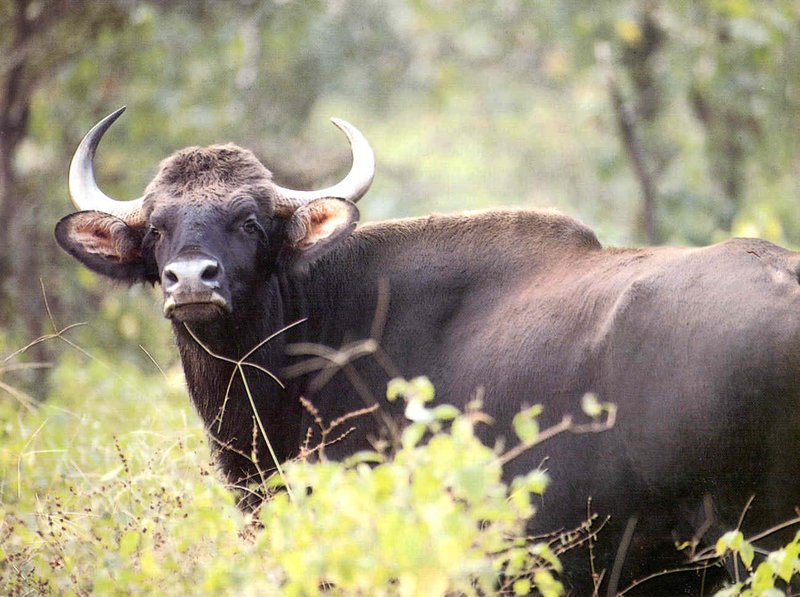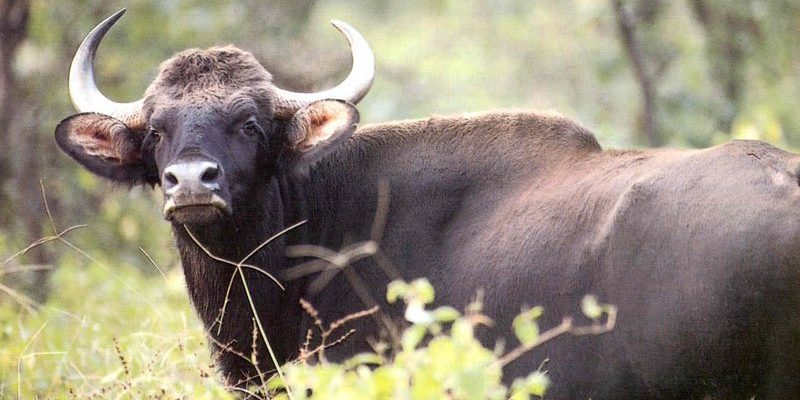
So, how do gaurs manage to not just survive, but flourish in places that other animals would find unbearable? It’s a combination of their physical abilities, social behavior, and the unique adaptations they’ve developed over time. Let’s dive deeper to uncover the secrets behind their survival tactics.
Physical Adaptations: Nature’s Design
Gaurs are built like tanks. They have strong, muscular bodies, sturdy legs, and massive heads with impressive horns. This physical build not only helps them fend off predators but also allows them to traverse rough terrains with ease. Picture them stomping across dense forests or steep hills; their sheer size and strength keep them safe from danger.
One of the standout features of the gaur is its thick skin and fur, which protect it from harsh weather conditions. Unlike other animals that might shiver in the cold or struggle in the heat, gaurs have adapted to manage their body temperature efficiently. They can often be found resting in shady areas during the hot afternoon sun, using their large bodies to create a cool space.
Additionally, their hooves are another marvel. They are wide and sturdy, perfect for gripping rocky surfaces and soft ground alike. This means they can migrate over long distances to find food and water, even in challenging landscapes.
Diet: The Art of Foraging
You might think that surviving in harsh environments would limit food options, but *gaurs are expert foragers*. They mainly graze on grasses, leaves, and shrubs, adapting their diet based on what is available. Imagine a buffet spread that changes with the seasons. They are particularly fond of tender leaves and fruits, and their strong jaws allow them to chew through tough vegetation that other grazers can’t handle.
In dry seasons, when food becomes scarce, gaurs can switch to eating bark and the tougher parts of plants. This flexibility in diet allows them to thrive where many other herbivores struggle. They’ve even been known to travel great distances in search of greener pastures, showing their determination and adaptability.
Interestingly enough, gaur herds often follow the paths of more experienced members. Younger gaurs learn where to find food and water by sticking close to the older, wiser ones, ensuring that they all have what they need to survive.
Social Behavior: The Power of Community
Social structures play a crucial role in how gaurs thrive in tough conditions. They generally live in groups called herds, which can consist of up to 30 individuals. This community aspect offers safety in numbers. Just think about how much strength there is in having friends around, especially when faced with predators like tigers.
Within these herds, there’s often a clear social hierarchy. Older males usually lead the group, guiding the younger ones to food and water sources and protecting them from threats. They communicate through a range of vocalizations and body language, ensuring everyone is aware of their surroundings.
In times of danger, gaurs are known to band together, facing threats as a unified front. This collective behavior not only helps in warding off predators but also fosters stronger bonds among herd members. You could say they’ve got a built-in support system for life in the wild.
Habitat Selection: Finding the Best Spots
Choosing the right habitat is vital for survival, and gaurs have a knack for it. They typically inhabit forests, grasslands, and mountainous regions across Southeast Asia. These areas provide a mix of food sources and shelter from harsh weather, which is crucial for their survival.
During the rainy season, gaurs often migrate to higher altitudes where it’s cooler and more humid. This movement showcases their adaptability and understanding of their environment. They instinctively know where to go for the best resources, which helps them dodge the harsher impacts of floods or heatwaves.
You might wonder how they find their way in these vast spaces. Gaurs have a strong sense of smell and can detect changes in their surroundings, helping them navigate to new habitats when needed.
Predator Avoidance: Staying One Step Ahead
While gaurs are powerful animals, they aren’t at the top of the food chain. They have to watch out for predators like tigers, leopards, and wild dogs. But here’s the thing: gaurs have some clever strategies to stay safe.
First off, their size acts as a natural deterrent. A fully grown gaur can weigh up to 2,000 pounds and stand over six feet tall at the shoulder. When faced with a threat, adult gaurs will often charge, using their impressive bulk to fend off attackers. It’s a bit like being a linebacker in football—sometimes, offense is the best defense.
Additionally, their strong herd mentality plays a big role in predator avoidance. When they sense danger, gaurs will form a protective circle, facing outward. This allows them to keep an eye on potential threats and coordinate their movements. It’s a team effort that enhances their chances of survival in a world full of challenges.
Climate Resilience: Weathering the Storms
Gaurs are no strangers to harsh weather; they can endure both extreme heat and heavy rainfall. In hot climates, they often take to shaded areas during the day, conserving energy and avoiding dehydration. Keeping their bodies cool is essential, especially in places where temperatures can soar.
During the rainy season, when lands can become muddy and treacherous, gaurs adapt by moving to higher ground. They’ve developed a keen sense of climate change, allowing them to anticipate weather patterns and shift their locations accordingly. This behavior is vital for their survival, ensuring they always have access to food and clean water.
Moreover, their thick fur provides additional insulation, helping them stay warm during cold snaps. Even when conditions change rapidly, gaurs can adjust their habits to make the best of the situation.
Conservation Challenges: Navigating Human Impact
Despite their resilience, gaurs face significant challenges due to human activities. Habitat loss, poaching, and climate change threaten their populations. As forests are cleared for agriculture or urban development, gaurs lose their homes and food sources.
Conservation efforts are crucial to help protect these amazing creatures. Protected reserves and national parks play a significant role in providing safe havens for gaurs. Educating local communities about the importance of biodiversity and promoting sustainable practices can encourage coexistence between humans and wildlife.
Honestly, the survival of gaurs reflects the broader health of our ecosystems. By helping them thrive, we take crucial steps toward preserving our planet’s biodiversity and ensuring a balanced environment for future generations.
In conclusion, gaurs are truly remarkable animals, showcasing the incredible ways life adapts to survive in harsh environments. Their physical adaptations, social behaviors, and smart habits allow them to not just endure but thrive in a world that can be unforgiving. Understanding how they navigate these challenges inspires us to appreciate the intricate dance of nature and the importance of protecting it.

